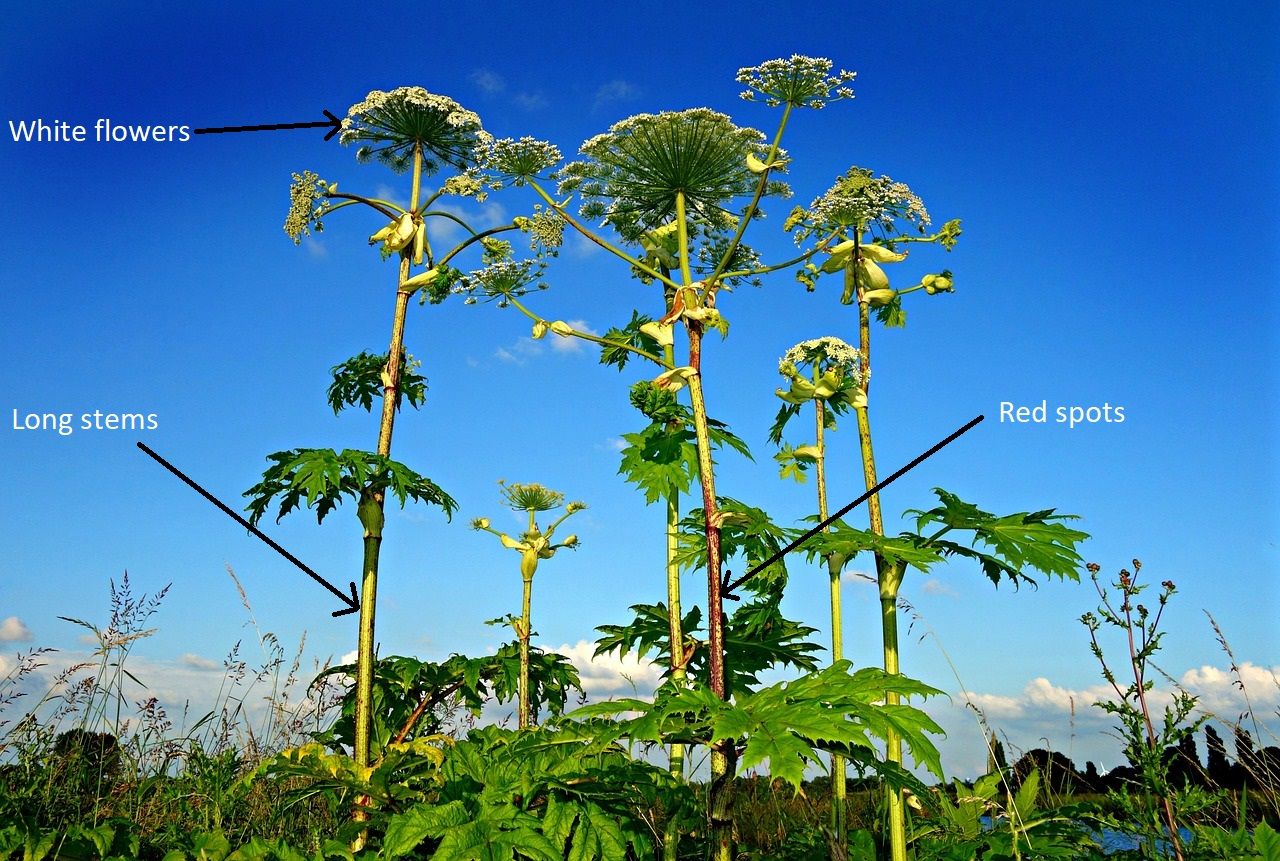The fascinating phototoxic effect of giant hogweed
Giant hogweed is a plant, that most commonly grews in the middle and northwestern of Europe as well as in North America. It can be recognized by its long stems (up to 5 meters), white flowers and red spots. Due to its phototoxicity it is considered to be a noxious weed. In the 19th century the giant hogweed, also known as hogsbane, was brought to Great Britain as an ornamental plant but since has spread all over Middle Europe. What is so fascinating about this plant is not its appearance but its effects on the human body, especially on the human skin.

Touching any part of the plant (leaves, roots, stems, flowers, and seeds) is risky since its sap in combination with sunlight, more precisely with ultraviolet light, can cause servere skin inflammation as well as up to second-degree burns of the skin and blisters. Because of emitted fumes, on hot summer days, even standing beside a hogsbane plant can cause dyspnoea (=breathlessness). Even suffering a circulatory shock is possible. The symptoms usually develop within 48 hours. When exposed directly to sunlight the skin usually turns red starts itching immediately. During the night the giant hogweed is harmless.
The reason of the phototoxical effects are derivates of ,,furanocoumarin’’. They invade the nucleus of the epithelial cells and connect with the DNA, which causes these cells to die and makes the impacted parts of the skin hypersensitive to ultraviolet light.
When interacting with the giant hogweed, protective clothes (including eye protection) should always be worn. Children should be kept away from these plants. If charactaristical symptoms appear a doctor should be consulted and the affected parts of the skin should be washed with water and soap as well as protected from ultraviolet light for a few days.
I hope I could give you Steemians some insights of what I think is one of the most exciting and fascinating plants in the world – a plant that is dangerous during the day and harmless during the night.
Stay healthy!
good article. it's not harmless during the night. if you touch it ANYTIME you can suffer the photoxic effects. they are very invasive and difficult to remove. where I live in East London they have resorted to using very toxic herbicides to kill them off. My advice is to stay well away from them and where we live stay away from the toxic areas where they are being treated with glyphosates.
Thank you!
You're right! It's not harmless - during the night there is no ultraviolet light coming from the sun that causes the symptoms but they can appear on the next day and also from artificial ultraviolet light.
awful stuff. I once touched a phototoxic plant in a garden, not knowing it was. the back of my hand went red in sunlight for the next couple of weeks.. I'm not sure what the long term effects are. not to be confused with COWSLIP.. a harmless and similar looking (smaller) plant
I love your creativity. It's amazing.
Thank you!
Your Post Has Been Featured on @Resteemable!
Feature any Steemit post using resteemit.com!
How It Works:
1. Take Any Steemit URL
2. Erase
https://3. Type
reGet Featured Instantly – Featured Posts are voted every 2.4hrs
Join the Curation Team Here
Thanks for helping me!
Jup. Die Pflanze wurde durch die Seefahrt und die damaligen reisen gern in die Herrenhäuser importiert und fand dadurch ihren Weg ins milde Klima und Europa....
Schön toxisch das Ding.
N Kumpel kam beim gärtnern damit in Berührung und lag tagelang mit Erkältungsähnlichen Erscheinungen im bett!!!
Nicht zu spaßen mit!
Kommt selbst durch Klamotten durch!
Aufpasse :-)
Ein deutschen introduceyourself wäre doch nice!
Auch den hashtag dafür verwenden ;-)
Dich kennen ja kaum welche hier...auf auf und schreiben
Steemit hugs